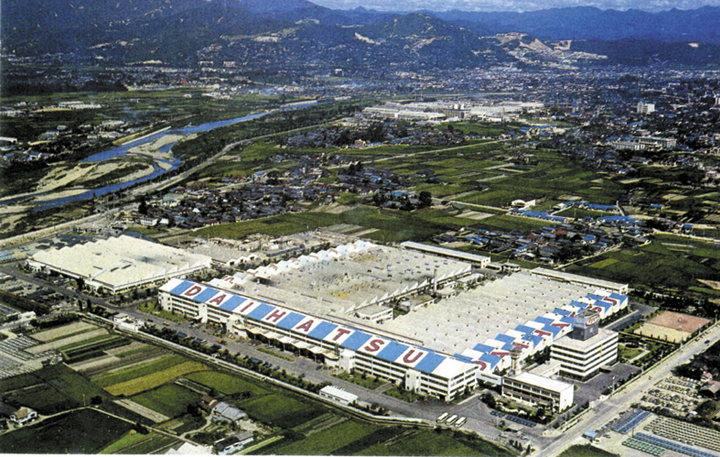Section 2. Motorization and Liberalization of Trade and Capital
Item 5. Alliance with Daihatsu Motor
In June 1967, the Japanese government made a decision on its basic policy on capital liberalization. During the meeting of the Japan-U.S. Trade and Economy Joint Committee held in September of that year, the U.S. side asked Japan to accelerate liberalization of capital transactions in Japan. Then in December of the same year, a visit to Japan was scheduled for a U.S. Auto Industry Delegation led by former Under Secretary of State George Ball, increasing the intensity of the onslaught of foreign capital. As a result, the Japanese auto industry was forced to strengthen its international competitiveness through size increases under a situation that was even tenser than before.
While these circumstances caused many to advocate industry regrouping even more aggressively than before, Sanwa Bank approached Toyota Motor Co., Ltd. about working together with Daihatsu Motor Co., Ltd. Unlike Hino Motors, many of the models being produced and sold by Daihatsu were competing with those of Toyota and Daihatsu Motor had no intention of liquidating those models. Therefore, the two companies agreed to a cooperative alliance based on an understanding that both companies would manage their respective companies independently and responsibly.
On November 9, 1967, Toyota Motor Co., Ltd., Toyota Motor Sales Co., Ltd., and Daihatsu Motor exchanged a memorandum of understanding about forming a cooperative alliance, held a signing ceremony at Hotel Okura in Minato-ku, Tokyo, and issued the following joint statement:
Toyota Motor Co., Ltd., Toyota Motor Sales Co., Ltd. (Toyota) and Daihatsu Motor Co., Ltd. have always maintained a friendly relationship, and have now agreed to form a cooperative alliance in order to make the relationship even closer.
With full-scale liberalization of the Japanese economy imminent, we consider it extremely urgent to enhance the international competitiveness of Japan's automotive industry through structural regrouping and improvements in corporate culture. Based on this assessment, Toyota and Daihatsu have agreed to takes steps toward our mutual benefit and to contribute to the healthy advance of the industry.
Therefore, although Daihatsu will become a member of the group centered on Toyota, the two sides will continue managing their companies independently and responsibly, capitalizing on their respective unique strengths.
Regarding the specific steps related to the cooperative alliance, we plan to form a committee as quickly as possible and will begin implementing those steps that are feasible.
At the press conference following the signing ceremony, President Eiji Toyoda explained the details of the cooperative alliance as follows:
No details have yet been finalized about the cooperative alliance with Daihatsu. We plan to establish a committee to study them as soon as possible. We will consider the difficult position we are in and hope to draw out both companies' strengths. Since a consistent battle strategy cannot be maintained if the companies in the Japanese automotive industry waver, we hope to use this Toyota-Daihatsu alliance as a common defense against the onslaught of foreign companies.
Although Toyota does not have a minivehicle division, we believe we will be able to gain an advantage by establishing a common strategy with Daihatsu. I think industry consolidation will continue.
(Nikkan Jidosha Shimbun, November 10, 1967)
As a result of this cooperative alliance, the Toyota Group established itself as an all-round corporate group offering all car models from large trucks to minivehicles, with passenger cars as the core, providing a great impetus to the regrouping of the Japanese automotive industry. A dedicated committee took up the issue of finalizing the specifics of the cooperative alliance and, subsequently, the benefits of the alliance were realized in many areas, from new car development to production subcontracting.




